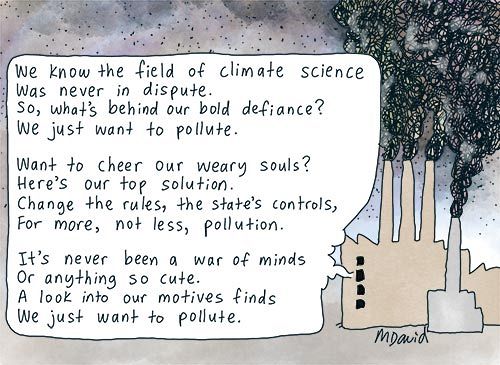New data shows ANZ and Westpac accelerating fossil fuel lending despite public climate pledges, placing them at odds with both regulators and their own commitments, writes Will van de Pol.
AS LIBERAL MEMBERS squabble after formally rejecting the scientific and economic imperative to reach net zero greenhouse gas emissions, a division is also starting to open up among the nation’s largest banks.
Australia’s big four banks all claim commitment to the climate goals of the Paris Agreement. Yet two – ANZ and Westpac – are failing to turn claims into concrete action.
Australia’s National Climate Risk Assessment and Climate Change Authority forecast severe risks across Australia’s economy and society. In business-as-usual scenarios for Australia, agricultural and labour productivity losses exceed $4.2 trillion by the end of the century, extreme weather events cost $35 billion a year by 2050, and $500 billion is wiped off the property market by 2030 due to climate change.
Every fraction of a degree of further warming turbo-charges these threats.
Market Forces has just finished crunching the latest numbers on the big four banks’ financing of the coal, oil and gas sectors. The findings are stark: Westpac and ANZ are backing a new wave of fossil fuel expansion, undermining the Paris climate goals, while Commonwealth Bank and National Australia Bank have made significant progress on cutting ties with major polluters.
Among the flurry of bank reporting over the last week are detailed climate-related financial disclosures. But more disclosure does not equal greater clarity.
By tracking the money, we can cut through the noise to see which banks are failing to make genuine progress towards their climate commitments. The data doesn’t lie.
Since the start of 2024, ANZ and Westpac have accounted for over 80% of all lending from Australia’s big four banks to the world’s major fossil fuel companies, which are undermining the clean energy transition.
These two banks are inviting particularly intense scrutiny and heightened regulatory, legal and reputational risk by continuing to finance fossil fuel expansion that is incompatible with the climate goals they claim to support.
ANZ remains the worst offender, accounting for almost $16 billion in financial support for major fossil fuel companies in the past decade.
By contrast, CommBank accounts for less than 6% of the big four’s combined funding to the coal, oil and gas companies posing the worst climate threat since the start of 2022. This is a notable about-face from our largest bank, which just a few years ago was keeping pace with ANZ as Australia’s biggest lender to fossil fuels.
There are also clear signs of a promising turnaround at NAB, albeit with a later and less pronounced shift. NAB’s financing for major fossil fuel companies has dropped by around two-thirds since the start of 2024, compared to its annual average from 2016 to 2023.
Now for the bad news.
Westpac is going backwards on climate action, leapfrogging CommBank and NAB and making ground on ANZ in its shameful race to the bottom. Despite previously lending the least to fossil fuels among its peers, Westpac has accounted for 36% of all big four lending to major coal, oil and gas companies since 2024.
Westpac’s fall from grace is all the more concerning when we consider how it has walked back previous commitments in an effort to ‘make it easier to finance the gas industry’.
In July 2022, then head of institutional banking, Anthony Miller, said Westpac would “continue to provide corporate lending only to customers with credible transition plans in place by 2025”. At the time, the bank defined a credible transition plan as one that aligned with a 1.5°C global warming limit and covered emissions from burning fossil fuel companies’ products.
These “scope 3” emissions typically make up around 90% of an oil and gas producer’s contribution to global heating that is driving the worsening human and economic toll of climate-fuelled heatwaves, bushfires and floods.
Having now stepped into the CEO role, Miller has led the bank while those previous statements have been watered down, with Westpac’s latest disclosures showing it continues to finance fossil fuel companies that have next to no plans to rein in scope 3 emissions.
Westpac has also lowered its ambition and made clear the bank may continue to finance companies misaligned with the climate goals of the Paris Agreement, ‘depending on the relationship we have with that client’.
Westpac’s client list includes Santos, Woodside, BP and BHP, whose combined fossil fuel-related scope 3 emissions were greater than Australia’s total national emissions in 2024. Decisions based on relationships rather than alignment with climate commitments are fraught with danger for Westpac, as customers and regulators are holding banks accountable for greenwashing.
The data tells us CommBank and NAB are waking up to the fact that meeting their commitments to supporting the goals of the Paris Agreement and net zero emissions by 2050 requires cutting off finance to companies intent on fossil fuel expansion.
ANZ and Westpac have the same overarching climate commitments. Australia’s misleading and deceptive conduct laws require ANZ and Westpac to have a reasonable basis for making those statements.
The growing divergence in fossil fuel funding presents serious risks for ANZ and Westpac and must be urgently addressed.
Westpac and ANZ must change course to live up to their climate commitments, not stick their heads in the sand like some politicians and expose customers, shareholders and all Australians to compounding climate risk.
Will van de Pol is the CEO of Market Forces and is driven by his desire to play an active role in the fight for climate justice.
 This work is licensed under a Creative Commons Attribution-NonCommercial-NoDerivs 3.0 Australia License
This work is licensed under a Creative Commons Attribution-NonCommercial-NoDerivs 3.0 Australia License
Support independent journalism Subscribe to IA.

Related Articles
- Coalition of the unlikely: How Australia and China could save the planet
- The Liberal guide to net zero: How to do nothing and call it policy
- Nationals’ net zero backflip a disaster for the regions
- Gray whale population crashes amid climate-driven starvation
- Trump's whirlwind: Our leaders are making the climate disaster worse













